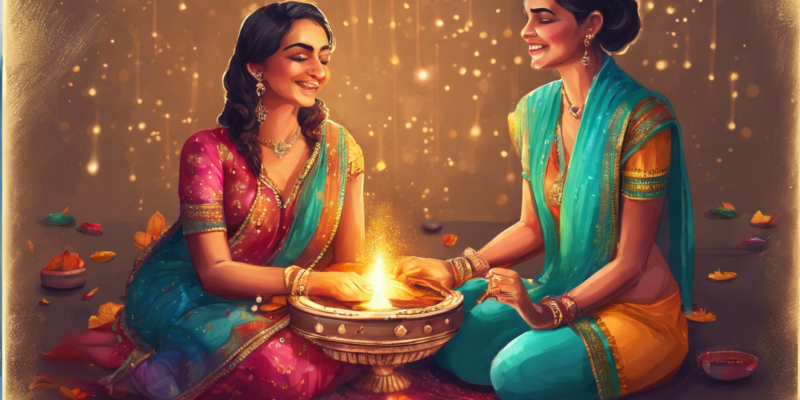Diwali, also known as Deepavali, is one of the most significant festivals in Hindu culture. It is a festival that symbolizes the victory of light over darkness and good over evil. Diwali is celebrated by millions of people across the world with great enthusiasm and fervor. The festival usually falls in the months of October or November, depending on the Hindu lunar calendar. In 2021, Diwali kab hai falls on November 4th.
The Significance of Diwali
Diwali holds immense cultural and spiritual significance in Hinduism, Jainism, Sikhism, and various other communities. The festival marks the return of Lord Rama, his wife Sita, and his brother Lakshmana to Ayodhya after 14 years of exile. It also commemorates the victory of Lord Krishna over the demon Narakasura. In Sikhism, Diwali is celebrated as Bandi Chhor Divas, marking the release of Guru Hargobind Ji from imprisonment.
Rituals and Traditions of Diwali
Diwali celebrations typically last for five days, each day holding its own significance and rituals. Dhanteras marks the beginning of the festival, with people buying gold, silver, or new utensils as a symbol of prosperity. Choti Diwali or Naraka Chaturdashi is the day when Lord Krishna defeated the demon Narakasura. Diwali itself is the main day of celebrations and is marked by lighting diyas (oil lamps) and candles to symbolize the victory of light over darkness. Goverdhan Puja is celebrated the day after Diwali to honor Lord Krishna’s lifting of the Govardhan Hill. Bhai Dooj is the fifth day when siblings reaffirm their bonds of love and affection.
Celebrations Around the World
Diwali is not only celebrated in India but all across the globe where Indian communities reside. Countries like Nepal, Sri Lanka, Malaysia, Singapore, Fiji, and the United States witness vibrant Diwali celebrations. In the UK, the Prime Minister hosts an annual Diwali reception at 10 Downing Street, showcasing the significance of the festival in British Indian culture.
Diwali Decorations and Rangoli
One of the highlights of Diwali is the colorful decorations that adorn houses and public spaces. Rangoli, an art form where patterns are created on the floor using colored powders, rice, or flower petals, is an integral part of Diwali decorations. The intricate designs of rangoli not only add to the aesthetics but also hold cultural significance, with each pattern symbolizing different aspects of the festival.
Diwali Sweets and Savories
No festival is complete without indulging in delicious treats, and Diwali is no exception. Traditional sweets like laddoos, jalebis, barfis, gulab jamun, and savory snacks like chaklis, mathri, namakparas, are prepared in households during Diwali. Exchanging sweets with family, friends, and neighbors is a common practice during the festival, symbolizing sharing joy and spreading happiness.
Diwali Fireworks and Crackers
While lighting diyas is the traditional way of celebrating Diwali, fireworks and firecrackers have become a popular feature of modern-day festivities. The burst of colors and sparkling lights in the night sky adds to the festive spirit. However, it is important to exercise caution and be mindful of the environmental impact of excessive fireworks during Diwali.
Eco-Friendly Diwali Celebrations
In recent years, there has been a growing emphasis on celebrating an eco-friendly Diwali. This includes using biodegradable materials for decorations, opting for electric diyas instead of oil lamps, and refraining from bursting firecrackers that contribute to air pollution. By being mindful of our actions, we can celebrate Diwali in a way that is sustainable and environmentally conscious.
Celebrating Diwali Amidst COVID-19
The ongoing pandemic has necessitated adjustments in the way festivals are celebrated. It is important to follow social distancing norms, wear masks, and avoid large gatherings to ensure a safe Diwali celebration. Virtual gatherings, sending e-greetings, and opting for online shopping can help maintain the festive spirit while prioritizing safety.
FAQs about Diwali
1. What is the significance of lighting diyas during Diwali?
Lighting diyas symbolizes the victory of light over darkness and knowledge over ignorance. It is also believed to invite prosperity and positivity into the home.
2. How can I celebrate a traditional Diwali at home?
You can decorate your house with rangoli, light diyas, prepare traditional sweets, and offer prayers to deities for blessings and prosperity.
3. Are there any specific prayers or rituals associated with Diwali?
Performing Lakshmi Puja, Ganesh Puja, reciting the Hanuman Chalisa, and lighting incense sticks are common rituals associated with Diwali.
4. Is it necessary to burst firecrackers during Diwali?
No, it is not necessary. In fact, opting for eco-friendly celebrations by avoiding firecrackers is a more sustainable and responsible way of celebrating Diwali.
5. How can I involve children in Diwali celebrations?
Involving children in making rangoli, helping with decorations, and teaching them about the significance of Diwali can make the festival more engaging and educational for them.
Diwali is a time of joy, togetherness, and reflection. It is a festival that transcends boundaries and brings people together in celebration. By understanding the significance of Diwali and embracing its traditions, we can truly experience the essence of this auspicious festival of lights.

